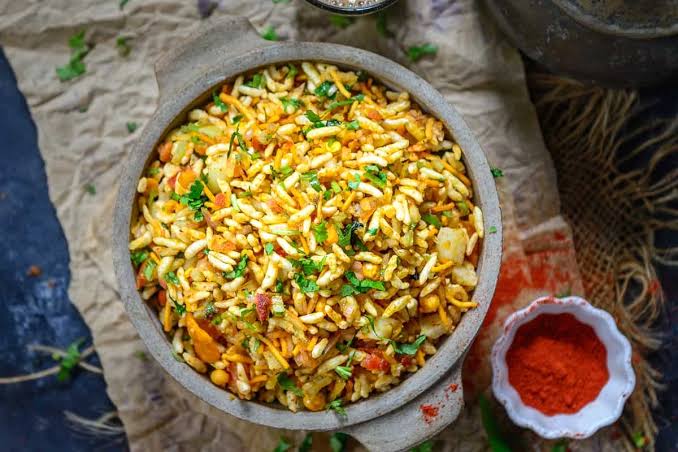Jhalmuri And World War 2

Jhal muri is a spicy puffed rice snack that is loved by everyone in Bengal. Jhalmuri is recently added in the list of Ten Foods Around the World to Try Before You Die. During World War 2 Labourers from Bihar and UP migrated to Kolkata and neighbouring Howrah and Kamarhati.
The Bihari migrant population mainly dealing with manual labourers in this city. Puffed rice that we called Muri was their main food in morning time before going to work. Lunch time they ate flatbread made of sattu or sometimes Muri mixed with overnight soaked Matar or Chola, onion and green chilli and add little bit mustard oil which they used for cooking.
After the fall of Singapore to Japanese aggression in February 1942, turned into a major site of a global war, American soldiers arrived in Calcutta. During this time the Bihari labourers for some extra income after finishing their work, they started to sell their Muri near Grand Hotel area.
They started to mixed more ingredients in Muri like cucumber, boiled potatoes etc and very soon their spicy tangy Muri attracted British and American soldiers. So many American soldiers that time stayed in Grand Hotel and nearby military camps.
This spicy Muri got a new identity Jhalmuri and became very popular as afternoon snack while strolling around market among American and British soldiers. But in the beginning Jhalmuri was not popular among Bengali, the main reason was class difference, Bengali Babus thought it was made by labour class people and not must be hygienic. But when they found foreign soldiers were consuming this snacks a curiosity was born and gradually it also became popular among local Bengalis.
In Bengal each and every place has its own way and recipe for making Jhalmuri and to understand this one must travel Bengal local train. If you travel to Medinipur or Kharagpur you can see the Jhalmuri vendors used the oil of raw mango pickle instead of mustard oil, in Namkhana and Diamond Harbour they prefer to add Ghugni into Jhalmuri.
North Bengal specially Falakata, Alipurduar in Jhalmuri adds potato fry instead of boiled potatoes, in Dankuni, Vaidyabati, Bandel you can find the chola that is used in Jhalmuri is overnight soaked in water but when you cross Hooghly district and reached Banpas, Talit, Khana, Guskara Jhalmuri makers use boiled chola. If you taste the Jhalmuri of Rampurhat, Tarapith you can find a new ingredient in Jhalmuri that is boiled Barbati seeds and in Maldah you can find Kusum Seeds in your Jhalmuri.
Even you can find Aloor Chop in your Jhalmuri that is in Panshkura and Mecheda. And do u know the most famous and tasty vegetable chop you can get in Mecheda. Panshkura Aloo chop speciality is in mashed potatoes add khesari Daal (grass peas). And Panshkura’s Moong Daal Jalebi is also very famous with its aloor chop.
There is also a street food very much similar to jhalmuri is Ghoti Garam. is basically a form of salted chanachur mixed with roasted peanuts, corns, finely chopped onions, green chillies and small pieces of Amra that is called hog plum. Ghoti Gorom originated in Bongaon, North 24 Parganas, West Bengal.
There is a large pan where the Ghoti Garam Seller keeps the Chanachur and peanuts and under this pan have a small chulha with coal that keeps the Chanachur warm means Garam. That’s why the name is given Ghoti Garam. There was also two very popular street food similar to Jhalmuri and Ghoti Garam is Bulbul Bhaja and Sare Botrish Bhaja(সাড়ে বত্রিশভাজা) but now it is just nostalgia.
Once upon a time Bulbul Bhaja created a wonderful fairy tale World among children, because the vendors wear the dress like clown of circus with fake beards, reciting funny poems and the sounds of their anklet bells, everything attracted to children.
Now we can not find this emotion and attachment in Lays Potato chips or KFC french fries. Bulbul Bhaja became superhero of the street food after releasing the movie Sriman Prithviraj of Tarun Majumdar and Ritwik Ghatak Bari theke Paliye and the vendors of bulbul bhaja became known as Haridas.
Sare Batrish Bhaja was same with Bulbul Bhaja but but was the only difference was a half green chilli that was served with Sare Botrish, and the half green chilli was known as Sare and Botrish was 32 types of ingredients.



